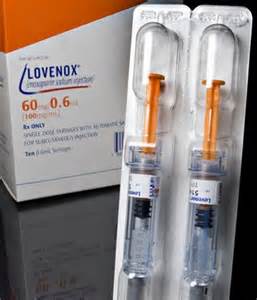While any plastic surgery procedure has it own unique set of potential risks and complications, the overwhelming similarility of them is that they are aesthetic in nature. Rarely does undergoing plastic surgery expose one to significant risks of major medical complications. The one exception is that of venous thromboembolism. (DVT) Known as blood clots that originate most commonly in the calfs and behind the knees, that can lead to pulmonary embolism (PE) which can be deadly. At the least a period of anticoagulation therapy is needed that usually must be continued for six months after the event.
The relevance of this medical issue is that as many as 2 million cases of DVT occur per year in the United States (not from plastic surgery) with roughly 15% to 25% of them leading to a PE. When a PE occurs almost a 1/3 of them result in death. So it is easy to why this medical concern has attracted of attention and preventative strategies.
The risk of DVT and PE amongst all collective surgery patients has been stated to be in the 1% range and has led to a number of intra- and postoperative strategies to reduce its risk. These include use risk of sequential compression devices (SEDs), patient positioning and adequate IV hydration during surgery. After surgery early walking and moving about as well as compression stockings in selected patients are encouraged. A preoperative assessment tool (Caprini scale) has also been developed to determine who is at greatest risk for developing a DVT where the addition of drug therapies may be given to reduce their risk.
Certain surgical procedures are well known to have an increased risk of DVT of which hip replacement surgery is at the top of the list. It is easy to see that this procedure is major surgery about the pelvic region, usually involves older patients and places them to a period of time after surgery where their mobility may be limited. There is no exact corollary to this procedure in elective plastic surgery but the closest would be tummy tuck surgery. That risk from ambulatory center data shows an occurrence of less than 0.1% or about once in every 1500 tummy tuck cases. This does not mean it can not occur in other aesthetic plastic surgery procedures but the risk factors are less in facial or breast surgery for example.

The hardest question is in determining which elective aesthetic surgery patients should have DVT prevention medication. The following procedures have been identified in plastic surgery…tummy tucks, extensive body contouring operations in which the patient has a high BMI or may have prolonged inactivity afterwards and anyone with a known clotting disorder. (e.g., factor V Leiden) While the use of DVT prevention drugs may increase the risk of bleeding and hematomas after surgery, multiple studies have failed to demonstrate this theoretical concern with their use.
Dr. Barry Eppley
Indianapolis, Indiana


